In the United States, October 11th to October 17th, 2020 is National Veterinary Technician Week, which according to the American Veterinary Medical Association, “provides an opportunity to recognize veterinary technicians’ contributions.”
Not every wildlife rehabilitator is or has a veterinary technician. However, technicians are certainly part of the wildlife rehabilitation process whether they are on your team as staff, volunteer, or a crucial part of the domestic animal veterinary team which assists rehabbers with the medical care of wildlife.
We want to take this opportunity to give a ‘shout out’ to veterinary technicians and nurses across the globe who dedicate their careers (and their lives) to the field of wildlife rehabilitation!
Missy Fox, CWR, CVT – Florida, United States
How long have you worked in the field of wildlife rehabilitation as a veterinary technician? 6 years 9 mos.
Where do you currently work? CROW: The Clinic for the Rehabilitation of Wildlife, on Sanibel Island, FL.
How did you first get drawn to the field of wildlife rehabilitation? I grew up in MN surrounded by tons of wildlife. I went to school for vet tech and immediately was drawn to wildlife medicine.
Describe an average day as a wildlife veterinary technician.Working at a wildlife hospital is very exciting and different every single day. You never know what animal may come in. The finder sheet may say duck and it is a cormorant. It may say rat and it is an opossum. Triaging and opening the boxes is like Christmas morning.One day you may be doing a blood transfusion on a rodenticide Hawk. The next day assisting in surgery on a 300 pound sea turtle. It is very exciting and rewarding when you see that animal head back into the wild.
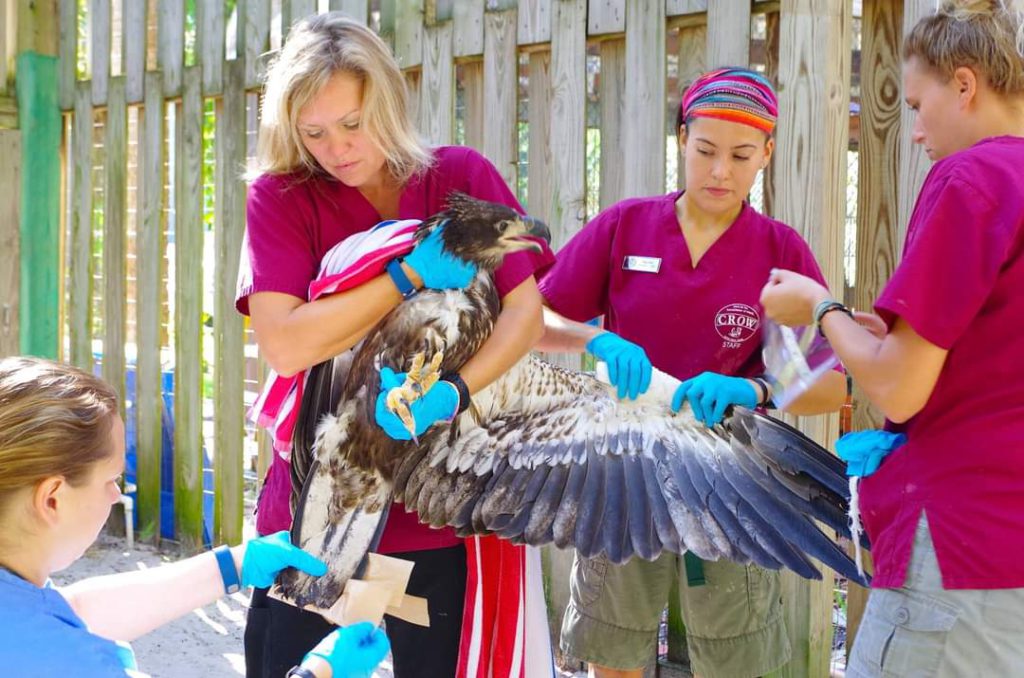
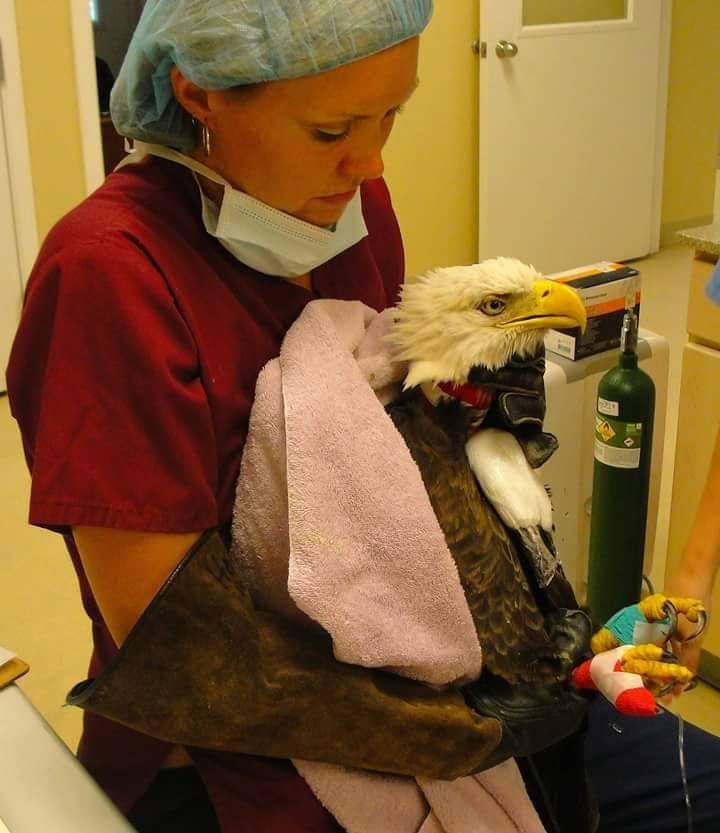

Why do you work in the field of wildlife rehabilitation? What’s special about *this* field? As a vet tech in wildlife medicine, you get the excitement of emergency medicine coupled with conservation medicine. You are making a difference for that individual patient, but also keeping certain endangered or critically endangered animals around for the future generations.
Tell us about a case that stood out to you. Down in southwest Florida we have a world-famous eagles nest. We had Ozzie the male adult eagle twice in our care. He had been watched at that nest with his mate Harriet for 25 years or so. The second time he came in it was after fighting a male for his nest. He ended up passing in our care which was really sad. His partner Harriet obtained that new mate named M15. They had a baby named E8. The eaglets are named in number. When that eaglet fledged he ended up getting hit by a great horned owl in the middle of the night. He went missing for a week and my co-worker Yvette, a volunteer and I went searching for him in the woods and we found him injured. He could fly, but luckily got stuck in thick vines and brush. He had a fractured femur. We pinned it at CROW. He was in our care for 3 months and got released back to his nest site. He was banded and was never seen again. That eagles nest will always have a special place in all of our hearts.
Pauline Nijman, vet tech – New Zealand
How long have you worked in the field of wildlife rehabilitation as a veterinary technician? I have been working as a technician for 11 years and was a marine mammal keeper prior and we did seal and seabird rescue/rehab (which was 7 years).
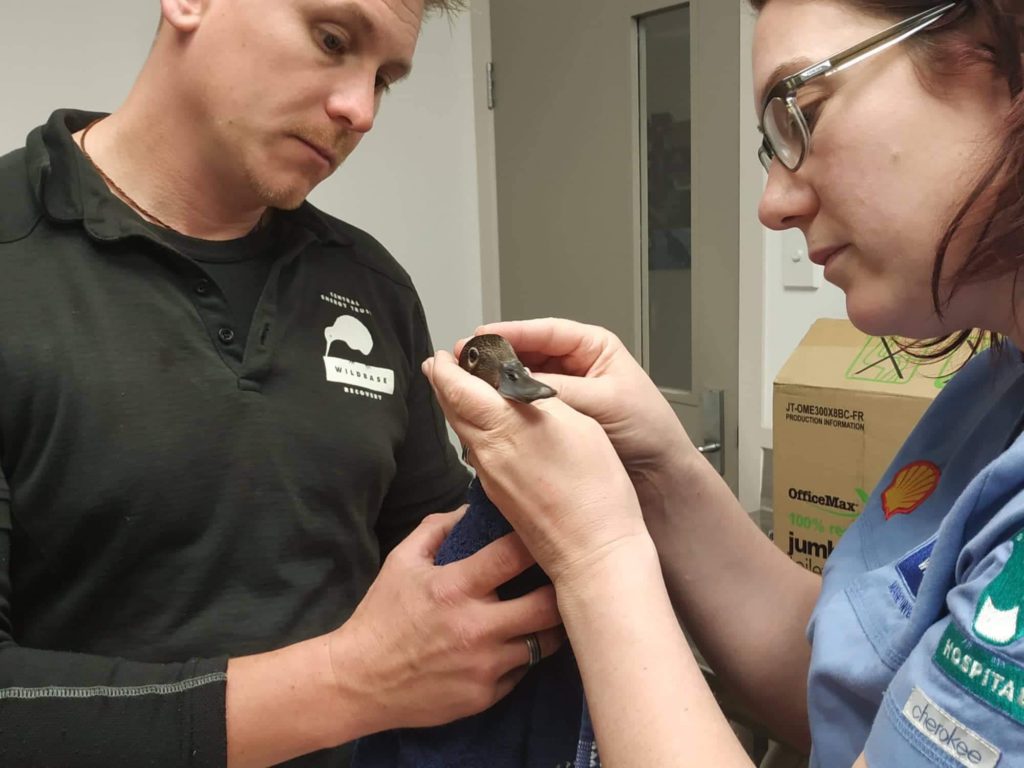
Where do you currently work? I work at Wildbase in NZ. We work within the NZ school of veterinary science and teach into undergraduate programs as well.
How did you first get drawn to the field of wildlife rehabilitation? Organically. I volunteered in a zoo from age 13, which is where I started learning many aspects of animal care. Since then I have become the operational manager for our dedicated wildlife rehab facility and was part of the design, build and direction.
Describe an average day as a wildlife veterinary technician.An average day for one of our techs:
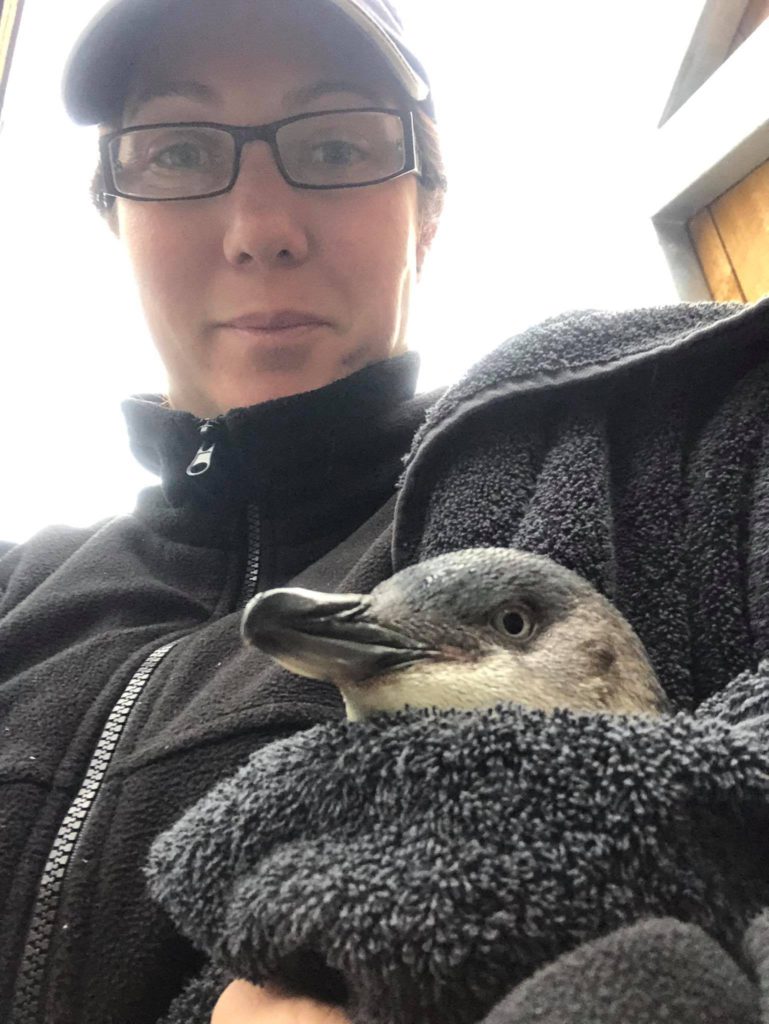
Food prep for the resident native birds/reptiles as well as the rehab patients. Feed out which involves food/water and poop scooping, adding enrichment, waterproof assessment, adding browse etc. Clean up of food bowls and dishes then…. it depends on the day- might be aviary set up or break down, pool cleaning, fighting with a pump, soil changes, tutorials, office work- records and ordering/stock taking.
Why do you work in the field of wildlife rehabilitation? What’s special about *this* field? There is the altruistic appeal, being part of the solution, educating public about what they don’t see or notice. Then for me, I’m excited to research more ways to measure success so that an individual does not have to solely rely on experience and observations only. There are so many unique species and one shoe does not fit all when it come to rehab and I’d love to document some of the processes we have in NZ.
Tell us about a case that stood out to you. One of my faves was a falcon with a fractured tarsometatarsus. She was young and healed quickly but had a large callus which likely impinged on her tendons and/or nerves. She did not have great foot function initially. We were able to monitor her progress through our CCTV and create ways to exercise her feet without having to interact with her. By the time she was released she had near-perfect foot function and dexterity and that was a real win in my book!
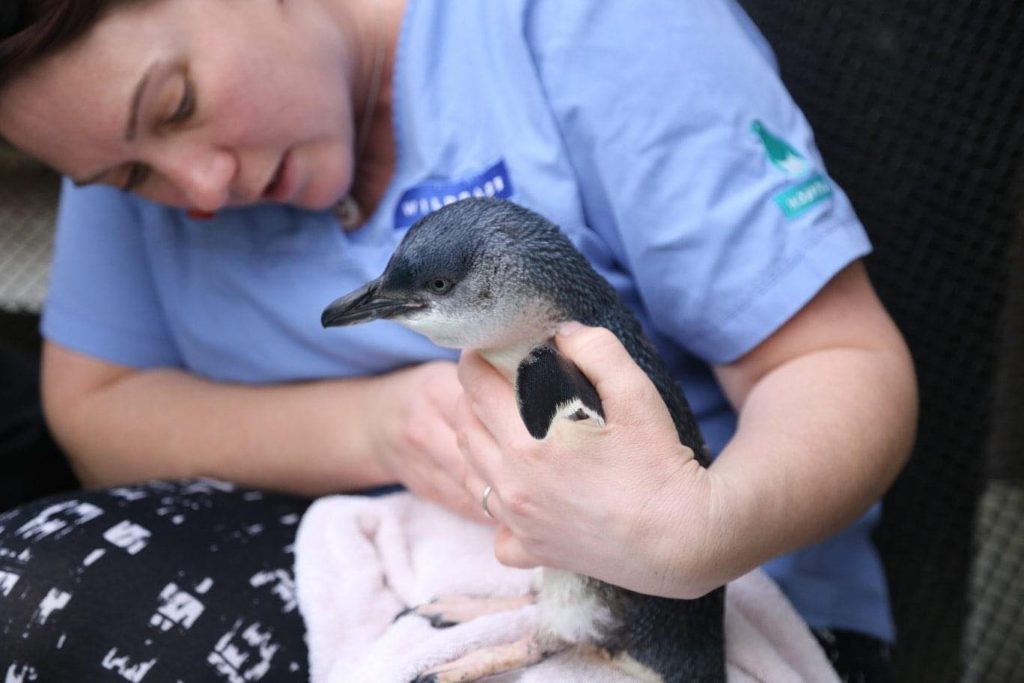
Michelle Anderson, CVT – Michigan, United States
How long have you worked in the field of wildlife rehabilitation as a veterinary technician? I’ve been a veterinary technician for over 20 years but started working in the field of wildlife rehabilitation 12 years ago.
Where do you currently work? I am a home based volunteer rehabber with Upper Peninsula Wildlife Rehabilitation – Keweenaw Group, in Michigan and I specialize in birds.
How did you first get drawn to the field of wildlife rehabilitation? I’ve always had an interest in wildlife, especially birds. When I married my Coast Guard husband and we left Cleveland where I’m originally from, we were blessed to live in areas with lots of wildlife all over the country. I worked for a short time with seabirds at the Oregon Coast Aquarium and after that I experience I decided I’d try to get more into working with birds. At our next location in the Florida keys I was volunteering at a wild bird center down there and suddenly the rehabber at the Key West Wildlife Center left the position and I was asked if I wanted to take over. I was literally thrown to the fire with a small amount of bird knowledge and experience but through my years as a veterinary technician in other fields, I was able to take on the challenge and apply what I’d learned to birds and expand my bird training and expertise.
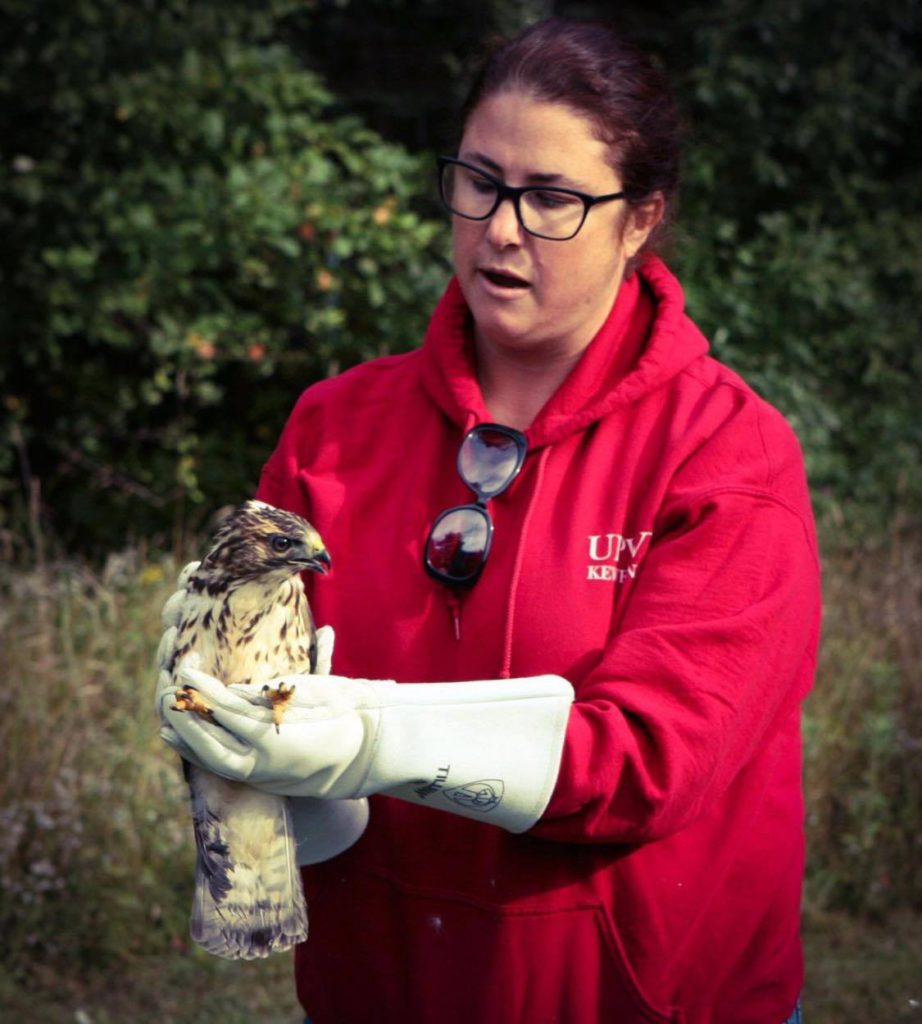
Describe an average day as a wildlife veterinary technician. No two days are alike that’s for sure! We are in a pretty spread out rural area, so it varies season to season what types of birds we get and the situations I have to deal with. The summer involves feeding a lot of orphaned, injured and ill baby songbirds from sun-up to sun-down. Physical exams upon arrival for each patient. Medications and treatments as needed. Running fecals and calculating doses of medications encompass the average day in the busy season.
Right now in the fall we get a lot of migrants coming through that get into trouble, such as striking windows or being hit by cars. My thought process is the same as a veterinary technician working in a big center, just tailored down a bit as most of my patients reside in a bird hospital I’ve created in part of our barn on our property.
Why do you work in the field of wildlife rehabilitation? What is special about *this* field? I want to try to help wildlife because I feel a responsibility to try counteract all the damage humans are doing to these beautiful creatures. The great majority of what we see is caused by humans. Hit by our cars, flying into our buildings, attacked by our domestic outdoor cats, the list goes on and on. Education is a huge part of our job as well as the hands on technical work with the animals. My hope is through our care of wildlife along with the education we do to help folks learn how to prevent these situations, we can do better by our wild friends and make a huge impact for our planet as a whole.
Tell us about a case that stood out to you. Oh boy! There have been a ton of awesome cases through the years. This past season was exciting because over the summer we built a large aviary on our newly purchased property. In the past we’d have to transfer larger bird cases to bigger centers because of the lack of appropriate-sized caging. We’ve had several herring and ring-billed gulls since I’ve been up here, every single one was either very very sick and died shortly after arrival, or had nasty wing injuries that couldn’t be repaired. Late summer we got a herring gull in with a fixable wing fracture! It was quite the struggle to do wing wrap changes and physical therapy as the bird was very aggressive (still have a scar on my leg!) but deep down I knew he’d recover with that sassy attitude. Such a delight to watch him fly around the aviary we worked so hard to build and later be released back into the wild. That was a huge sense of accomplishment to be able to provide the full span of rehab and recovery at my own little home based facility. The releases are just the BEST!!!
Leave a Reply
You must be logged in to post a comment.